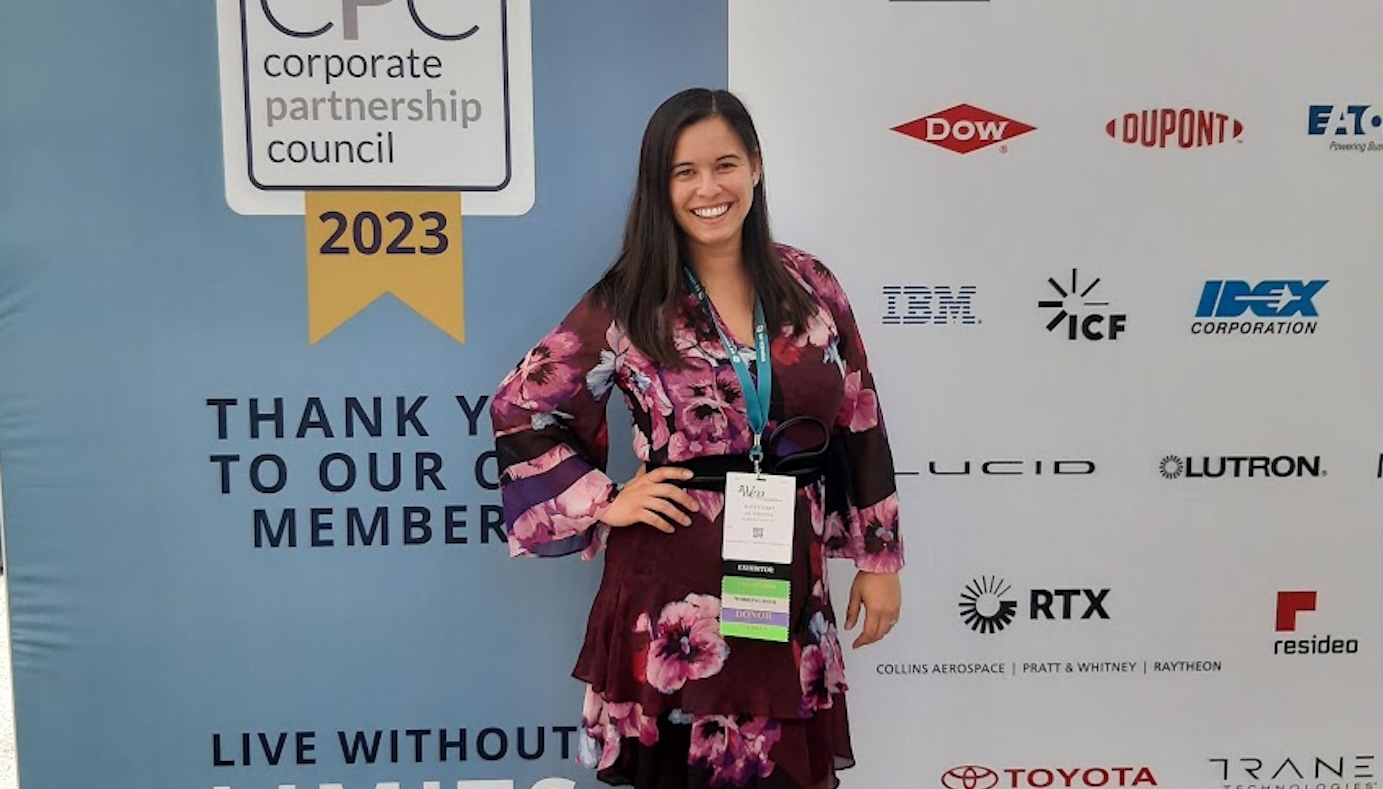When Kassy Hart was a teenager, she thought the life of an engineer was a bit like a newspaper cartoon she used to read. “You’re just sitting at a desk not talking to anyone, and this boss will yell at you for no reason,” says Hart, who is now a data center and hydrogen commercialization manager at GE Vernova. “That was before I got to design something.”
It was the summer of 2006, and Hart, who was partway through a bachelor’s degree in languages and international economics, was interning in GE Appliances’ finance department. Boasting a high school diploma and credits in math and science — and loads of enthusiasm — Hart applied for an engineering intern position at the company. (“I ended up working two at the same time,” she remembers.)
Hart’s new engineering boss didn’t yell at her but rather threw her a project: to redesign a foam widget that would stop dishwasher doors from bending when pushed. Still unaware of CAD tools, Hart hand-drew and cut a design, which worked like a charm. “It was simple and small, and it could be manufactured in batches,” she says. “We estimated it would save around $45,000 a year.”
Encouraged by her success, Hart trained her sights higher and studied for a bachelor’s and later a master’s in mechanical engineering with a certificate in power and energy at the University of Kentucky. Policy became her biggest interest. “I wanted to influence decisions on how we’re going to control or enable technologies for the future, specifically in energy.”
Now she’s doing exactly that. Today Hart is known for her engineering work on heavy-duty turbines that can burn hydrogen-rich blends, and as a font of knowledge about the fuel. She’s been recognized as one of this year’s Women in Hydrogen 50, a list of 50 women industry leaders who have been nominated by their peers. Along with GE Vernova’s Lisa Berry, she was honored this week at the Women’s Global Leadership Conference in Energy (WGLC) in Houston.

Hydrogen’s Unharnessed Potential
It’s become increasingly clear that heavy-duty turbine operators can swap out natural gas for hydrogen and not sacrifice a single megawatt-hour of generation. But Hart is keen to ensure that hydrogen’s sustainability benefits are fully acknowledged. “Using just a small amount of hydrogen [in a heavy-duty turbine] can reduce emissions by more than you think,” she says. For example, the impact on a heavy-duty turbine’s carbon emissions when you mix a mere 5% hydrogen by volume with natural gas fuel is equivalent to taking thousands of cars off the road. (One of GE Vernova’s H-Class turbines burning a 50% mix of hydrogen and running in combined cycle would result in 43% fewer carbon emissions than natural gas — not to mention up to 69% fewer than coal.)
Hart urges policymakers and power generators to grasp the benefits on the table. “If you can produce hydrogen on-site, why wouldn’t you?” she says, referring to the renewable and nuclear plants that generate the power to produce yellow, pink, and green hydrogen. She is also keen to banish the notion that hydrogen combustion is an “impossible” technology. “People compare it to what’s in play right now,” she says. “We have around three million miles of natural gas distribution and pipelines in the United States, versus only 1,600 miles of hydrogen pipelines,” she explains. Hart trusts in the laws of economic gravity, which dictate that long-term investment in the industry will drive costs down.
Costs and sustainability are also closely intertwined, argues the engineer, citing the example of modern transportation. “Cars have such good gas mileage and improved technology because of our push to lower fuel costs, consumption, and emissions,” she says. “The same principle will determine hydrogen adoption.”

Hart, who is a proud global committee member of GE Vernova’s 10,000-strong Women’s Network, has been spreading these messages far and wide in recent years. She’s supported the industry’s response to hydrogen production incentives and even launched an internal information hub that provides updates on global hydrogen policy. As the laying of the groundwork continues, the onetime intern with a clever appliance solution is now turning her attention to building the industry. “The technology is here, and it’s being adopted — perhaps at a slower pace than we’d hoped, but it’s happening,” she says.
Adds Hart: “We’ll see more success stories, more projects going into operation, which will help normalize lower-carbon fuels in power generation. That’ll be a win for sustainability around the globe.”
